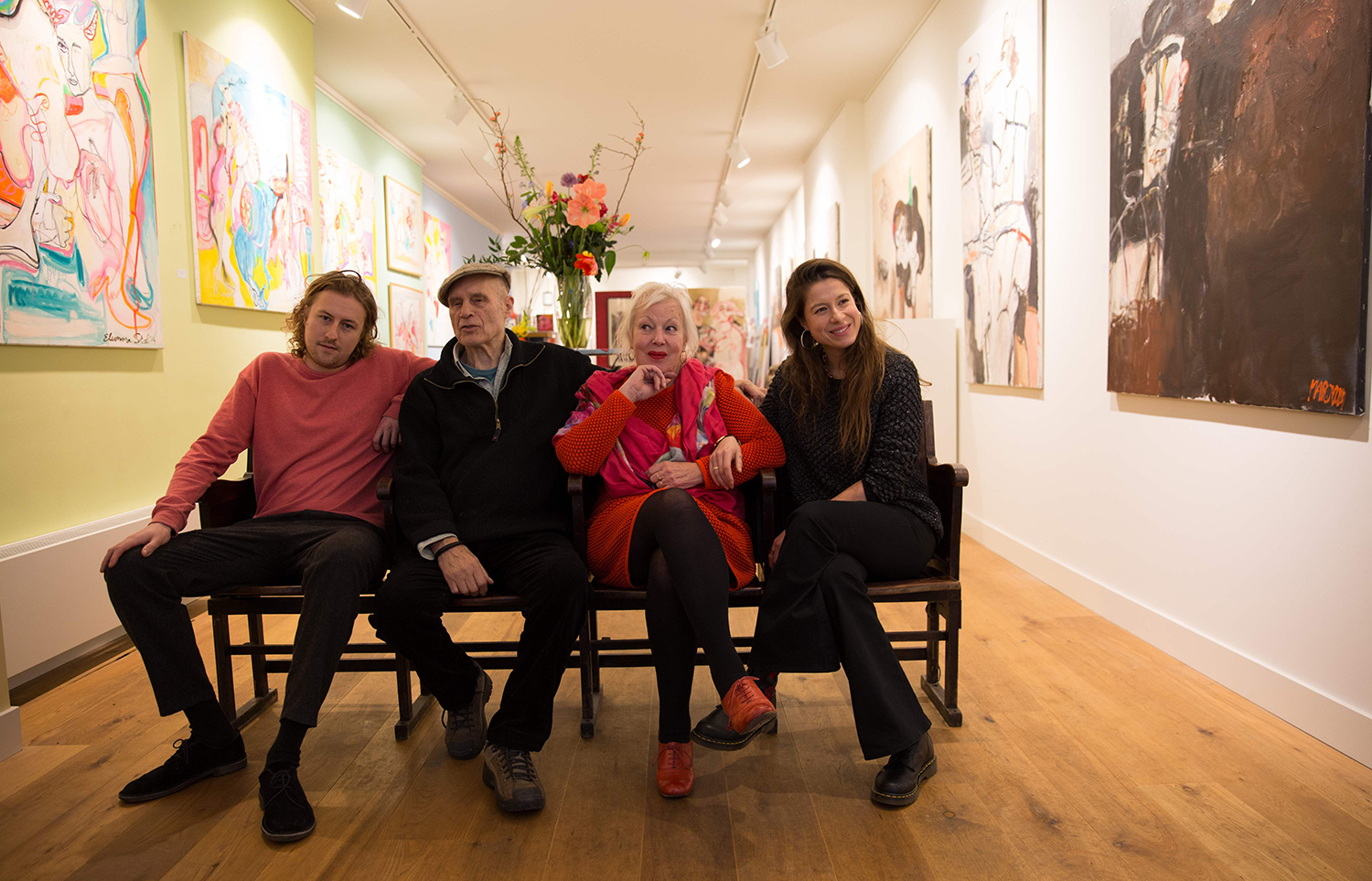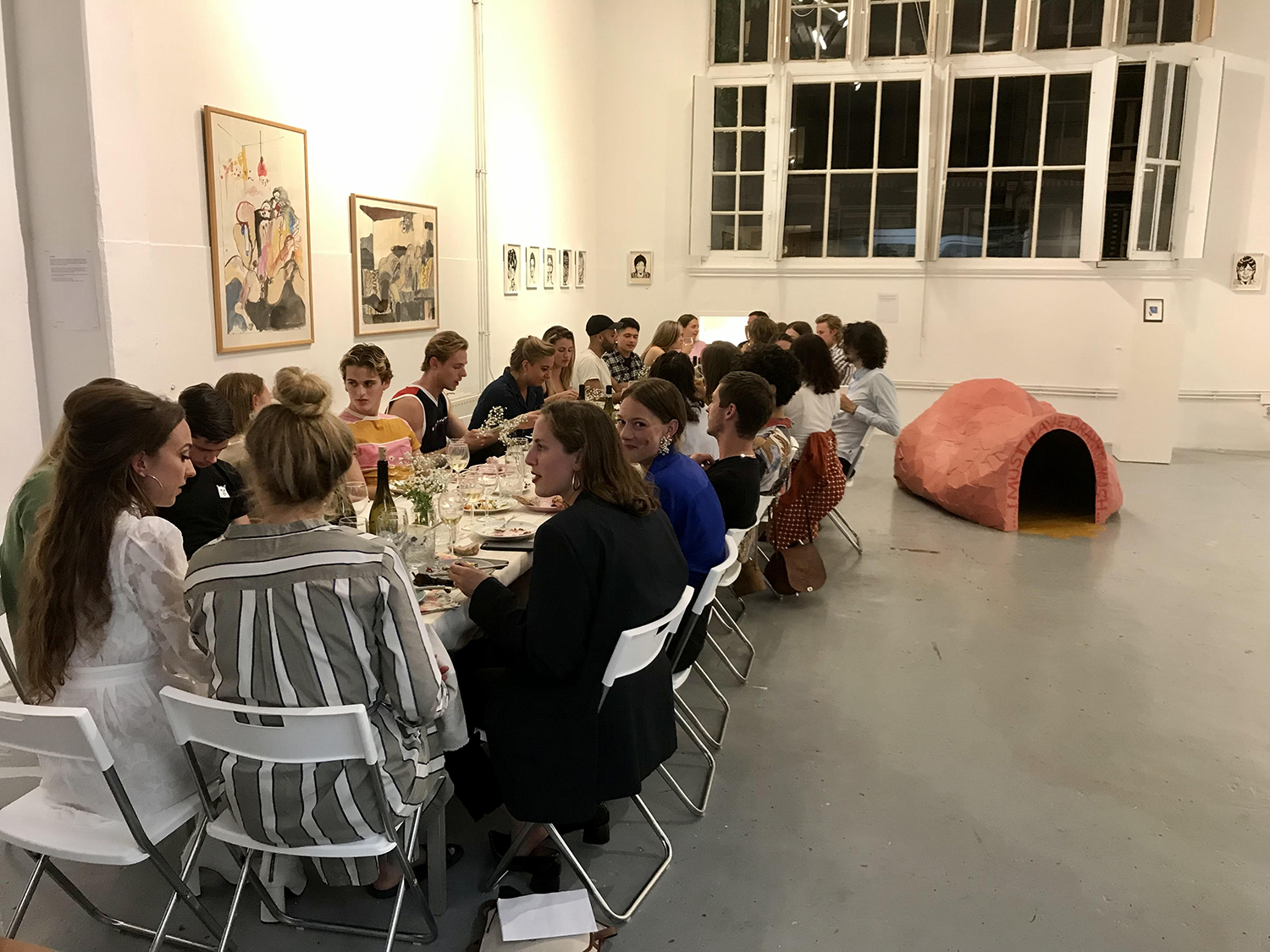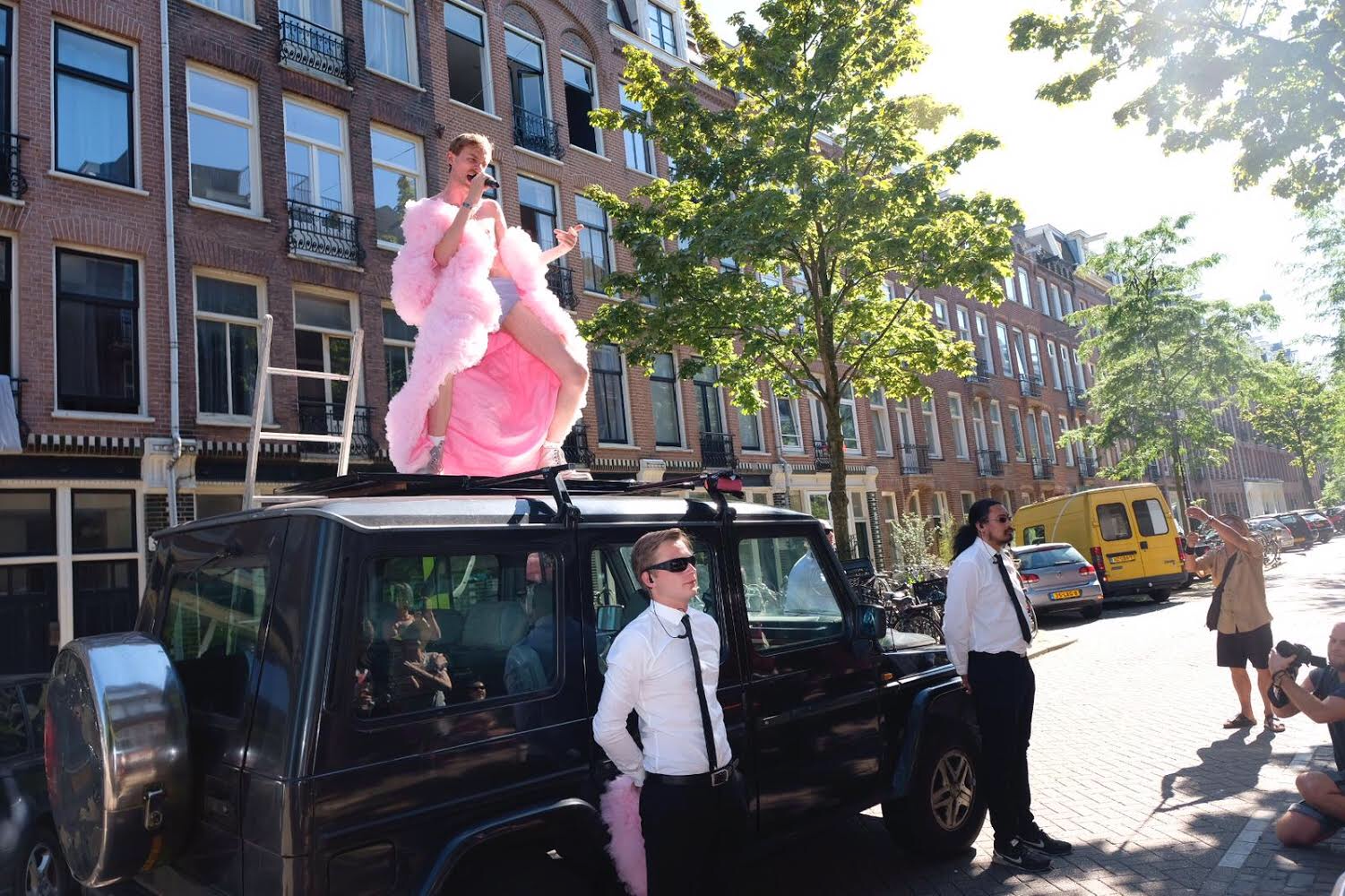27 august 2021, Oscar van Gelderen
The gallery of… Fleur Feringa & Wouter van Herwaarden (Galerie Fleur & Wouter)
We’re you exposed to art while growing up?
Wouter: My mother is an artist, my father a civil engineer and both are very interested in art. My father worked at NS Vastgoed, the real-estate branch of the National Railways, and the architects he worked with there – such as Benthem Crouwel and Rem Koolhaas – sent me beautiful overview books, which shaped my love for art books. My mother took me to museums on vacations. They also collect art, for example the work of artist friend Nikkie le Nobel, but also André Cardol and Saar Scheerlings, which is why I came to galleries at a young age. In recent years my father has started collecting Japanese prints, something I introduced him to.
Fleur: Not particularly. My father is a tax specialist and had an artist client who at times paid him in gigantic paintings with huge blobs of oil paint, which had a huge attraction for me as a child. A seed has certainly been planted there. My parents took me to the Concertgebouw every year, which I thought was terrible at the time. My great interest was in fashion, so that's where all the attention went.

Together with Anton Martineau and Eleonora Stol during the first exhibition of Galerie Fleur & Wouter, 2017. Photo Inta Nahapetjan.
Wouter: I studied art history in Amsterdam, without thinking about what kind of job I might up in. I got an impression of the various positions within the art world during internships at the now defunct Smart Project Space/New Art Space Amsterdam, as well as at Foam and the Van Gogh Museum.
Fleur: I worked in the fashion industry, and through the PR agency where I did an internship I met artist Eleonora Stol. As that friendship developed, I got more and more involved in her artistic practice. I helped her file, tagged along to art fairs. She introduced me to her partner, artist Anton Martineau. In turn, I then introduced them to Wouter. This is how the four of us became friends and on the initiative of Eleonora and Anton we made our first exhibition about their work. That went well, and was so much fun, that we decided to make another exhibition with the work of four young painters. Then we organized an auction at Sexyland where art could be traded for anything but money. This concept was picked up by Museumnacht and after traveling for two years as a pop-up gallery, we settled in a permanent space in De Pijp in Amsterdam in 2019, which we share with GoMulan Gallery
.

Exhibition Wilde Beesten in the Kerkstraat, Amsterdam. In the background work by Olivier Schimmel and Sam Andrea, 2017. Photo Laura Andalou.
What was your first job in a gallery? Or did you immediately start a gallery yourself?
Wouter: We hadn't really thought about the way we were going to finance our first exhibition. To us the easiest way seemed to sell the work. We gradually learned how the gallery world works, we are actually still discovering that.
Fleur: I once made an exhibition on the Prinsengracht with work by Eleonora Stol and Paul Deiters, because I saw an opportunity to do so. After that I organized an exhibition about the work of eleven female artists and an art manifestation in Loods 6. After the first two tent exhibitions with Galerie Fleur & Wouter, we both got hired at O.D. Gallery, a street art gallery on the Singel, together with two other girls, Emilie Mariman and Shannon Martin. Gallery. We enjoyed working here until the start of the pandemic a year and a half ago.

Gallery Fleur & Wouter pop-up exhibition Fata Morgana in the space of O.D. Gallery, 2018. Photo Kyra Sacks.
Wouter: From my student days as an art history student, I knew how intimidating it can be to enter a gallery. We wanted to do that differently. From the outset, the aim has been to introduce young people to art, to make them feel at home in the gallery and to inspire them to start collecting. This philosophy is reflected in all our communications. We try to communicate easily and accessible, and tell clear stories.
Our artists share a great joy of making, which is reflected in the works. It is often colourful work, with a great story to it. Work that instantly attracts you, but then turns out to have many other layers as well. We find it interesting to work with all types of media and are always looking for cross-links outside the visual arts, for example, showing fashion designers such as Lieselot Elzinga or designers like Gert Wessels. In the past year we have introduced outsider art to our audience, which will become a permanent part of the gallery.
Fleur: We know how much fun it is to collect art and we hope to turn as many people as possible into fellow collectors. After all, buying art is the most direct way to support an artist.

Dinner at the gallery at Van Ostadestraat 43A, Amsterdam, during the exhibition Dahmer's Dates & other sex stories, 2019.
What do you think is the best part of being a gallerist?
Wouter: It’s great to work with young artists on their careers and to see them reach an ever-wider audience.
Fleur:It's a bit of a fairy-tale job: working with fantastic artists, visiting their studios, the gallery as a meeting place. And if a visitor decides to buy a certain work, that’s great. That feels a bit like being part of an adoption.
Which national / international galleries do you feel an affinity with?
Wouter: Jennifer Lauren Gallery in London presents a great selection of outsider art that I envy, such as Indian artist Pradeep Kumar carving intricate exotic birds and people from matches. Or the Japanese artist Shinichi Sawada who creates clay sculptures that resemble friendly monsters. Everyday Gallery in Antwerp shows a very exciting combination of art and design. Also, I am really fond of the communication and the artists of Tim Van Laere Gallery. In any case, I am strongly attracted to Belgian galleries, where there is a lot of eye for humour in art and presenting art with humour, something I also find very important.
Fleur: Of course with our colleague at GoMulan Gallery. We take turns creating exhibitions in our shared space, and sometimes curate one together. And of course with our friends at the O.D. Gallery. Cokkie Snoei supports a number of artists that we also support, just like our friends at Vriend van Bavink. We have shared mission with Jan Hoek's new Outsiderland at Sexyland World, where outsider art is placed in a new light.

Performance Lieselot Elzinga with brother and sister during the exhibition Pop Art, 2019. Photo: Jaap van der Does.
In an ideal world, which artist would you most like to represent?
Wouter: I like Erik van Lieshout's work, because it has everything to make young people enthusiastic about art. I think a collaboration with him would be very exciting.
Fleur: A show with Grayson Perry would be a dream come true, but actually I'm very happy with all the artists we've had the opportunity to work with so far.
What has changed in the art world since you took your first steps?
Wouter: Due to the pandemic, the emphasis has shifted more to digital. When we had to close, we immediately saw the challenge of transferring art – something you actually need to see in real life – digitally. We have tried to do this with digital presentations, live streams and especially with our own TV channel: Fleur & Wouter TV.
Fleur: We only started four and a half years ago, but of course the pandemic has turned everything upside down. There has been a clear shift to online and that is here to stay.
What / whose work do you collect yourself?
Wouter: I have a great interest in Japanese prints. The first work I bought was a landscape by Kawase Hasui. I also have a lot of work by artists that we have exhibited, such as photos by Cleo Goossens and Lonneke van der Palen. When Anton Martineau – the man who initiated the gallery and a close friend – pased away, I inherited a large canvas from him. This one has a prominent place in the house.
Fleur: I like combinations of different media. I have many paintings, drawings and gouaches by Eleonora Stol and some by Anton Martineau. Photos by Laura Andalou, Lonneke van der Palen and Iris Haverkamp Begemann. An oil pastel by Johan Kleinjan and an oil painting canvas by Sam Andrea. Mixed media by Jan Hoek, Bruin Parry, a textile work by Maurits Sterkenburg, all artists we work with ourselves.
The first work I ever bought was a print by Emilie van Spronsen. Through the O.D. I own work by street art artists Bortusk Leer, Jim Avignon, SHN and a portrait of Grace Jones by the legendary photographer Ricky Powell. Recently, I started collecting 3D work. I got a lovely white ceramic rat from Danielle Hoogendoorn. At Outsiderland I bought a dolphin sculpture by Yorick, an artist who works at De Witte Olifant studios. My latest purchase is a rather stark ceramic pink handbag from Naomi Gilon, who we'll be doing a show with in December. I just collected it.
Has the pandemic changed the way you see the artworld?
Fleur & Wouter: By properly documenting an exhibition and putting together a strong online presentation, an exhibition can be visited 24/7 from all over the world, even after it has physically ended in the gallery. Besides Fleur's mother and a number of good friends, few people come to see every exhibition. Due to a strong online representation, everyone can still have the feeling that they are part of it and the work manages to reach a much greater audience. Actually, a lot can be done online, but in the end nothing beats the real-life experience.

Fleur Feringa, Iris Ruisch, Bas Kosters and Jan Hoek in the pop-up exhibition at Amsterdam Central Station as part of the OutsiderWear Festival, 2021.
See all artists represented by Galerie Fleur & Wouter




